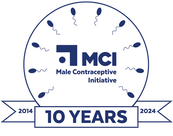Fertility Awareness
"Fertility awareness" means that a woman knows how to tell when the fertile time of her menstrual cycle starts and ends. (The fertile time is when she can become pregnant.)
Synopsis
Sometimes called periodic abstinence or natural family planning, “fertility awareness” is a method of contraception where a woman monitors and records different fertility signals during her menstrual cycle to work out when she's likely to get pregnant. This method works primarily by helping a woman know when she could become pregnant. The couple prevents pregnancy by avoiding unprotected vaginal sex during these fertile days, usually by abstaining or by using condoms or a diaphragm. Some couples may also use spermicides or withdrawal, but these are among the least effective methods.
A woman can use several ways, alone or in combination, to tell when her fertile time begins and ends:
Sometimes called periodic abstinence or natural family planning, “fertility awareness” is a method of contraception where a woman monitors and records different fertility signals during her menstrual cycle to work out when she's likely to get pregnant. This method works primarily by helping a woman know when she could become pregnant. The couple prevents pregnancy by avoiding unprotected vaginal sex during these fertile days, usually by abstaining or by using condoms or a diaphragm. Some couples may also use spermicides or withdrawal, but these are among the least effective methods.
A woman can use several ways, alone or in combination, to tell when her fertile time begins and ends:
- Calendar-based methods involve keeping track of days of the menstrual cycle to identify the start and end of the fertile time. Examples of this are the “Standard Days Method” (which avoids unprotected vaginal sex on days 8 through 19 of the menstrual cycle) and the “Calendar Rhythm Method” (in which women track their menstrual history to predict when they will ovulate).
- Symptoms-based methods depend on observing signs of fertility, such as cervical secretions or vaginal wetness, as well as basal body temperature (BBT) when a woman’s resting body temperature goes up slightly after the release of an egg (ovulation) as a woman is not likely to become pregnant from 3 days after this temperature rise through the start of her next monthly bleeding. Her temperature stays higher until the beginning of her next monthly bleeding.
Key Points
- Fertility awareness methods require partners' cooperation as the couple must be committed to abstaining from sex or using another birth control method on fertile days.
- Must stay aware of body changes or keep track of days, according to rules of the specific method.
- No side effects or health risks.
Effectiveness
Risk of pregnancy is greatest when couples have sex on the fertile days without using another method. As commonly used, in the first year about 15 pregnancies per 100 women (15%) using periodic abstinence.This means that 85 of every 100 women (85%) relying on periodic abstinence will not become pregnant.
Pregnancy rates per 100 Women over the first year with consistent and correct use vary for different types of fertility awareness methods:
Risk of pregnancy is greatest when couples have sex on the fertile days without using another method. As commonly used, in the first year about 15 pregnancies per 100 women (15%) using periodic abstinence.This means that 85 of every 100 women (85%) relying on periodic abstinence will not become pregnant.
Pregnancy rates per 100 Women over the first year with consistent and correct use vary for different types of fertility awareness methods:
Method |
Consistent & Correct Use |
As Commonly Used |
Standard Days Method |
5 (5%) |
12 (12%) |
TwoDays Method |
4 (4%) |
13 (13%) |
Ovulation Method |
3 (3%) |
23 (23%) |
Symptothermal Method |
<1 (<1%) |
2 (2%) |
Reliable effectiveness rates are not available for the calendar rhythm method or the basal body temperature method. In general, abstaining during fertile times is more effective than using another method during fertile times.
Interested in a contraception consultation with a healthcare provider?
Visitors who would like to learn more about this contraceptive method are invited to click on the button below to begin the process of seeking a contraception consultation with a healthcare professional.
Interested in a Vasectomy?
Visitors that have already decided they would like to proceed with a vasectomy consultation are invited to go directly to that section of the decision-making tool by clicking on the button below and following the instructions provided on those pages.

